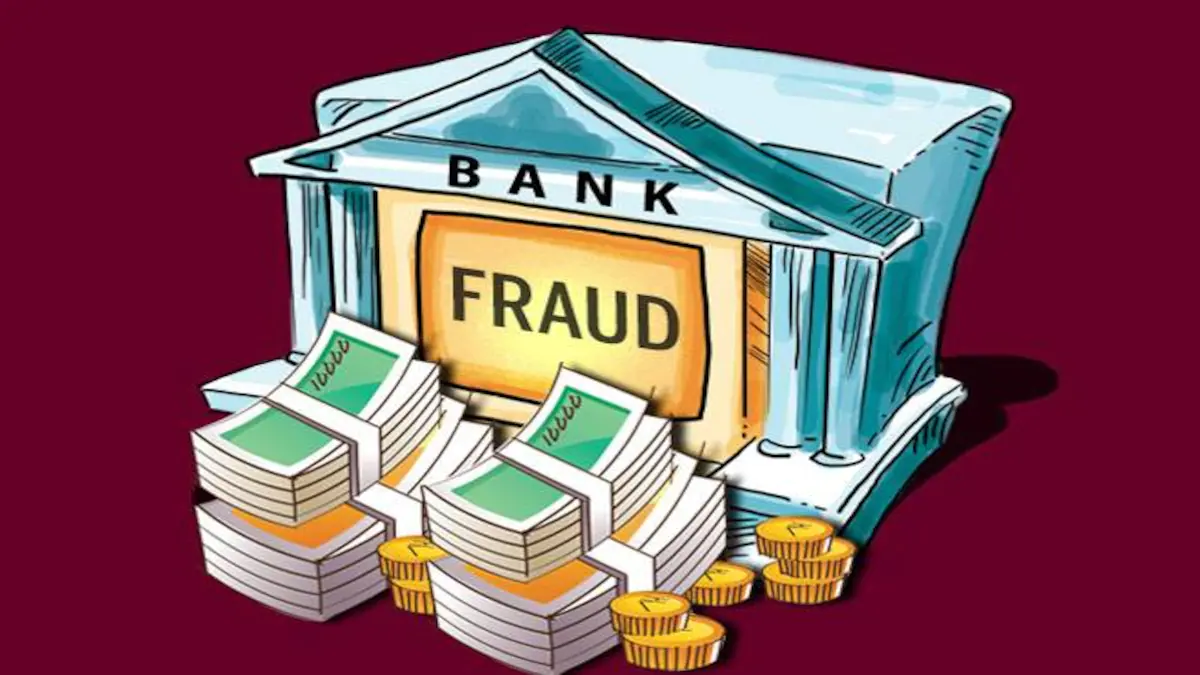
Increasing fraud in the banking industry
- July 14, 2023
- 0
In the banking industry, there were 9,102 cases of fraud amounting to 60,389 crores in the financial year 2022.
In comparison, there were mere 1.37 lakh crore rupees in 7,358 cases of fraud in the financial year 2021 and 1.85 lakh crore rupees in 8,702 cases of fraud in the financial year 2020. In the year 2019, fraudulent cases with banks involved a total amount of 1.9 lakh crore rupees in 8,700 cases.
In June 2017, the Reserve Bank of India (RBI) highlighted the increasing cases of fraud in the financial stability report and raised concerns about significant fraudulent amounts involved, posing risks to the financial sector.
Two years later, in June 2019, the financial stability report emphasized the delay in identifying fraud cases, leading to a worsening situation. The report stated that 90.6% of the cases registered in the financial year 2019 were those that occurred between ‘2000 and 2018’.
In December 2018, the RBI identified fraud as the most serious concern in the Indian banking system in terms of risk management.
In March, the Supreme Court stated that before classifying an account as fraudulent, borrowers must be given the opportunity to present their side. Declaring an account as fraudulent without proper consideration not only impacts the borrower’s ability to access credit but also violates principles of natural justice.
Fraudsters are also changing their methods of deception. While cases of fraud related to loans are decreasing, cybercrime is increasing rapidly. Cybercrimes involve card or internet-based transactions. It is also true that cyber crimes cannot equal to the fraudulent amount with the non repayment of loan by the fraud companies. For example, ABG Shipyard had defrauded State Bank of India and 27 other banks for 22,842 crores, and Punjab National Bank (PNB) was involved in an Rs 11,400 crore fraud.
Currently, banks provide borrowers with the opportunity to present their side if they fail to make payments, but they do not listen to fraudsters. If fraudsters are given a chance to present their side, the situation may not change significantly. After all, who will believe that they were involved in fraud?
Banks thoroughly investigate before associating an account with fraud since somewhere the amounts involved are related to stakeholders. Why would they try to blame innocent borrowers?
Another important point to consider is that the Supreme Court has also stated that it is not necessary to provide creditors with the opportunity to present their side before initiating primary investigations.
बैंकिग उद्योग में बढ़ती धोखाधड़ी
बैंकिंग उद्योग ने वित्त वर्ष 2022 में 60,389 करोड़ रुपये की धोखाधड़ी के 9,102 मामले दर्ज किए थे।
इनकी तुलना में वित्त वर्ष 2021 में 7,358 मामलों में सिर्फ 1.37 लाख करोड़ रुपये और वित्त वर्ष 2020 में 8,702 मामलों में 1.85 लाख करोड़ रुपये की धोखाधड़ी के मामले दर्ज किए गए थे। वर्ष 2019 में बैंकों के साथ धोखाधड़ी के 8,700 मामलों में 1.9 लाख करोड़ रुपये की रकम संलिप्त थी।
जून 2017 में वित्तीय स्थायित्व रिपोर्ट में भारतीय रिजर्व बैंक (आरबीआई) ने बैंकों के साथ धोखाधड़ी के बढ़ते मामलों और इनमें शामिल भारी भरकम रकम का जिक्र किया था और ऐसे मामलों को वित्तीय क्षेत्र के लिए जोखिम करार दिया था।
दो वर्ष बाद जून 2019 में जारी वित्तीय स्थिरता रिपोर्ट में धोखाधड़ी के मामलों की पहचान में देरी को तेजी से बिगड़ती स्थिति के लिए जिम्मेदार ठहराया गया। इस रिपोर्ट में कहा गया कि वित्त वर्ष 2019 में दर्ज 90.6 प्रतिशत मामले ऐसे थे जो ‘2000 और 2018‘ की बीच की अवधि में दर्ज हुए थे।
दिसंबर 2018 में आरबीआई ने भारतीय बैंकिंग प्रणाली में जोखिम प्रबंधन की राह में धोखाधड़ी को सबसे गंभीर चिंता का विषय बताया था।
मार्च के अंत में उच्चतम न्यायालय ने कहा कि किसी खाते को धोखाधड़ी के रूप में वर्गीकृत करने से पहले कर्जधारकों को उनका पक्ष रखने का मौका अवश्य दिया जाना चाहिए। अगर बैंक मनमाने ढंग से किसी कर्जधारक को जालसाज घोषित करते हैं तो इससे न केवल उस कर्जधारक की ऋण लेने की क्षमता पर असर होता है बल्कि यह परिपत्र प्राकृतिक न्याय के सिद्धांतों का भी उल्लंघन करता है।
अब बैंकों के साथ जालसाजी के तरीके भी बदल रहे हैं। ऋण से जुड़ी जालसाजी के मामलों में अब कमी आ रही है मगर साइबर अपराध तेजी से बढ़ते जा रहे हैं। साइबर अपराध में कार्ड या इंटरनेट आधारित लेनदेन शामिल होते हैं। यह भी सच है कि कंपनियों द्वारा ऋण नहीं चुकाने के मामलों में शामिल रकम की बराबरी साइबर अपराध नहीं कर सकते हैं। उदाहरण के लिए एबीजी शिपयार्ड ने एसबीआई और अन्य 27 बैंकों को 22,842 करोड़ रुपये का चूना लगाया था। इसी तरह पंजाब नैशनल बैंक (पीएनबी) के साथ 11,400 करोड़ रुपये का फर्जीवाड़ा हुआ था।
इस समय बैंक इरादतन भुगतान नहीं करने वालों को उनका पक्ष रखने का मौका तो देते हैं मगर वे जालसाजों की नहीं सुनते हैं। अगर जालसाजों को उनका पक्ष रखने की अनुमति मिल जाती है तो इससे स्थितियां शायद ही बदलेंगी। आखिर कौन मानेगा कि उसने धोखाधड़ी की है?
बैंक किसी खाते को धोखाधड़ी से जोड़ने से पहले काफी जांच-पड़ताल करते हैं। ये मामले सीधे हमसे जुड़े हैं क्योंकि इनमें कहीं न कहीं जमाकर्ताओं की रकम शामिल होती है। आखिर, वे किसी निर्दोष कर्जधारकों को दोषी ठहराने की कोशिश क्यों करेंगे?
एक ध्यान देने योग्य बात यह भी है कि उच्चतम न्यायालय ने यह भी कहा है कि प्राथमिकी दर्ज किए जाने से पहले जरूरी नहीं है कि कर्जदाताओं को उसका पक्ष रखने का मौका दिया जाए।































































